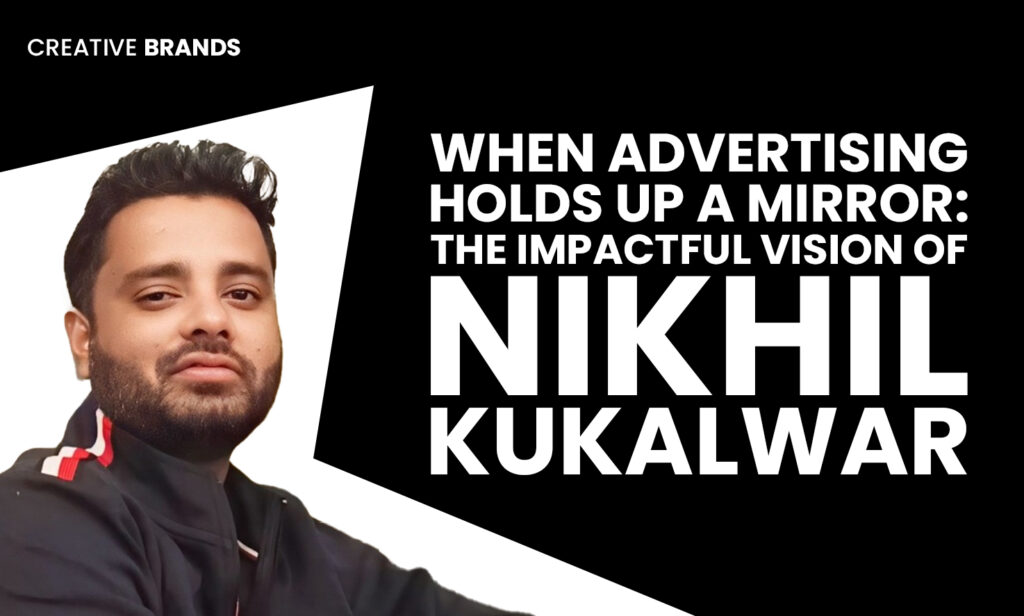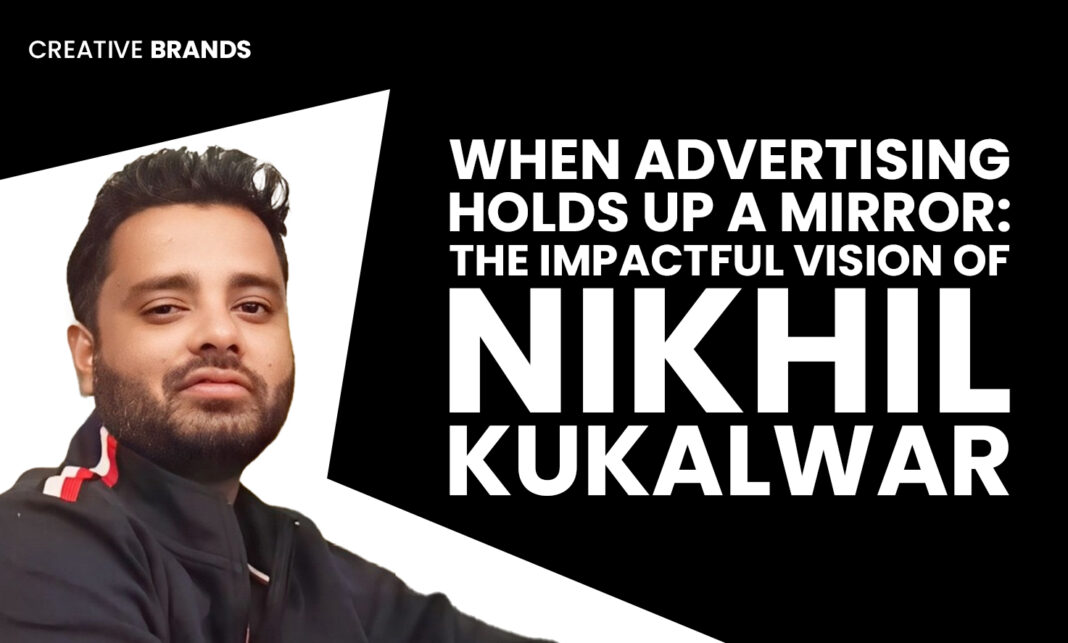In a world overflowing with advertisements that compete for clicks, likes, and fleeting attention, every once in a while comes a campaign that stops people in their tracks—not with glamour or gimmicks, but with raw honesty. One such campaign, now being hailed as one of the finest in the history of advertising, has done precisely that.

These print ads don’t just grab your attention—they confront you. They make you pause, look inward, and question your choices. They are the kind of ads that make you uncomfortable—not because they are loud or shocking, but because they hold up a mirror to who we are as individuals and as a society.
And behind this remarkable work stands Nikhil Kukalwar—the creative mind whose vision turned a simple concept into a social reflection.
The Power of Discomfort
Kukalwar’s campaign is built on a principle that few advertisers dare to explore: the power of discomfort. In an era where marketing often sugarcoats reality to sell, his ads choose to unsettle. Each image and line of copy works like a mirror—stark, unapologetic, and deeply human.
“The best advertising doesn’t tell people what to think,” Kukalwar is known to say. “It makes them think.” That philosophy echoes through every frame of his campaign. The visuals are hauntingly simple, yet loaded with meaning. The copy is crisp, yet it lingers long after you’ve turned the page.
The ads force viewers to confront uncomfortable truths—about habits, biases, and the contradictions of modern living. They don’t just sell an idea; they sell introspection.
When Ads Become a Social Dialogue
The reaction was immediate and intense. Viewers didn’t just appreciate the creativity—they felt something. Social media buzzed with emotional responses, think pieces, and personal stories from people who said the ads made them “rethink their choices.”
This was more than a campaign. It was a conversation starter.
From living rooms to classrooms, the ads found their way into debates about social responsibility, empathy, and the power of media to drive awareness. Marketing experts praised the campaign for blurring the line between art and advocacy, calling it “a rare example of advertising that changes behaviour, not just perception.”
The Man Behind the Mirror
Nikhil Kukalwar’s journey into advertising has always been guided by a belief that creativity must have purpose. Known for his nuanced storytelling and emotional depth, Kukalwar has a knack for transforming ordinary subjects into extraordinary reflections on human experience.
Colleagues describe him as someone who “never chases awards, only impact.” That impact, in this case, is undeniable. His campaign has sparked discussions far beyond the industry—earning praise from psychologists, educators, and social reformers who see it as an example of how visual communication can touch the conscience of a generation.
Beyond the Campaign
What makes Kukalwar’s work stand out is not just the message, but the method. In a digital-first world, where brevity often trumps depth, he chose print as his medium—a deliberate move that lent weight and permanence to his message.
In doing so, he proved that traditional media still holds immense power when used with intention and insight. Each ad feels like a piece of visual literature—something you don’t scroll past, but rather sit with.
The campaign’s design language is minimalistic, relying on subtle contrasts and stark imagery to drive emotion. There’s no sensationalism, no over-the-top dramatization—just truth, distilled to its purest form.
A Legacy of Meaningful Creativity
Advertising often promises transformation—buy this, do that, feel better. Kukalwar’s work challenges that formula. Instead of promising change, it provokes it. By holding a mirror to society, he invites viewers to confront uncomfortable questions and, in doing so, become part of the change themselves.
Critics and audiences alike agree that this campaign marks a turning point—a reminder that advertising can be more than persuasion; it can be revelation.
For Nikhil Kukalwar, this is not just another creative milestone. It’s a reaffirmation of why he entered the industry in the first place—to use creativity as a force for awareness, empathy, and transformation.
The Ad That Made Us See Ourselves
In the end, the greatest success of this campaign lies not in the accolades it receives, but in the silent moments it creates—the pause between seeing and realizing, the seconds when a viewer looks at the ad, then looks inward.
In an age of constant distraction, that pause is rare. And powerful.
Nikhil Kukalwar’s work reminds us that great advertising doesn’t just sell products—it sells perspective. It tells us who we are, and who we could be if we dared to see ourselves more clearly.
And sometimes, that’s all it takes to make the world just a little more honest.
Discover more from Creative Brands
Subscribe to get the latest posts sent to your email.






